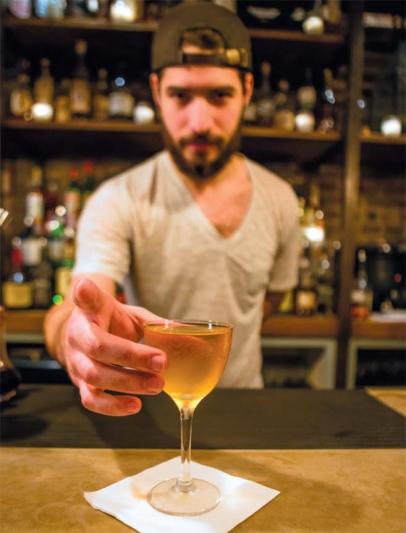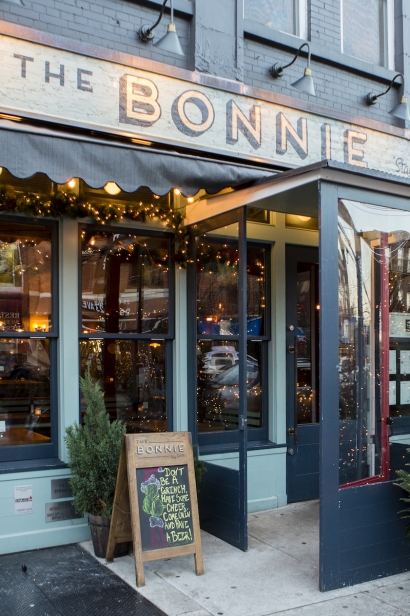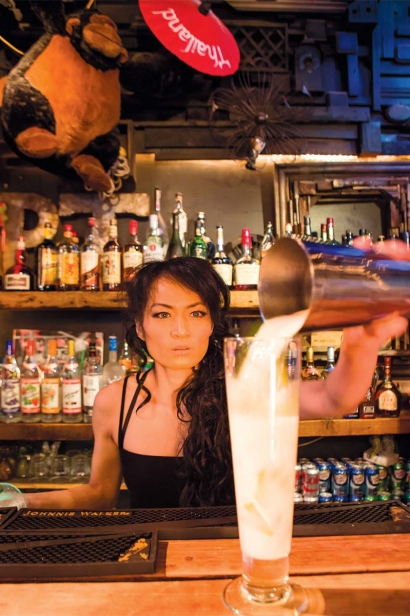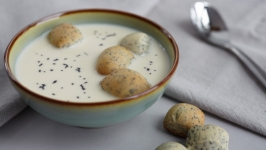Drinking to Diversity Across Queens
To say Queens is diverse is like saying the pope is Catholic or an Imam is Muslim. No racial or ethnic group holds a majority in the borough that boasts mosques, synagogues, Buddhist temples, and churches. We befriend what others may see as strangers and raise a glass to travel the world in one sip; the stain on our cocktail napkin a stamp in our passport.
Edible Queens began during this fraught time in history with the purpose of elevating and celebrating the borough and its many diverse residents through the lens of food and drink, and we continue in our mission now by drinking up—in Thai bars, Irish bars, Korean bars and bars of every nationality represented in between.
In light of the inauguration, we echo comedian Solomon Georgio who recently said on Twitter, “Remember being your unapologetic self in times of adversity is also an act of civil disobedience.” Georgio, who escaped to the United States from Sudan with his Ethiopian refugee parents when he was just 3 years old, now makes people laugh on “Conan,” “Comedy Central” and “Viceland,” and knows a thing or two about being his unapologetic self in the face of adversity. With New Year’s just passed, we continue to toast to our many colors, creeds, cultures and, of course, beverages. We still celebrate.
The great potato famine made Woodside the largest Irish-American community in Queens in the 1860s, and the borough still plays host to many Irish immigrants, who famously make up a large percentage of the city’s bartenders. To celebrate this culture, we visited The Bonnie, which is not an “Irish bar” per se but a cocktail destination with an “Irish backbone,” in the words of Mike Di Tota, who manages the bar program. The owners, having grown up together in the Irish Isles, couldn’t help but infuse a bit of their heritage into the bar.
Di Tota mixed us up a quintessentially Irish-inspired cocktail called The Apothecary. Served in an elegant Nick & Nora glass, it evokes a certain Shakespearean feel (The Bonnie’s going for a Shakespeare theme this year); you almost feel full of swoon drinking it, fancying yourself a pitiful star-crossed lover.
What makes The Apothecary Irish? For one, it packs a punch. Di Tota modestly refers to it as a “sipping cocktail.” And it’s a whiskey forward drink made with, of course, Irish whiskey. Many distilleries in Ireland are coming to the U.S. market to peddle their small batch whiskey, and one comes from a distillery in Dublin called Teeling. There’s Caribbean-made white rum for roundness; Tom Cat gin distilled with honey; and Cocchi Americano, Pamplemousse liqueur and fortified wine for a sweet, bittering effect. It’s all handmixed with turbinado sugar, autumn-spiced syrup and simple syrup for an all-around lush, creamy and subtle taste of Ireland.
In Korea, the two important liquors to know are soju and makgeolli (various spellings). Soju is distilled rice liquor, and makgeolli is an unfiltered wine made from rice or wheat mixed with Nuruk, a Korean fermentation starter.
According to Ava Choi, a bartender at The COOP, Flushing’s popular chicken shack, soju is the drink of choice for young people in Korea because it’s well marketed—and, well, the cheapest. Soju also has a longer shelf life, lasting up to a few years, whereas makgeolli must be consumed fresh, and can only last up to one month.
We caught up with the bar staff to learn more about Korean drinking culture, and tasted their soju and makgeolli cocktails, both served in pitchers that keep cool on a bed of ice. The COOP makes soju in several flavors, including lychee, grapefruit and peach, but we sampled the mango, which is made with fresh mango purée, soju and Sprite.
It’s a highly sweet yet powerful tipple traditionally sipped in little bowl-shaped glasses.
The makgeolli cocktail is yogurt-based and has a similar makeup of soju and Sprite. It has a thicker texture, so it almost feels like chewing as you drink it, similar to bubble tea or tapioca pudding. Choi magnanimously said, “It’s like kimchi—good for your health.”
As far as Thai cocktails are concerned, there’s no better place to learn up and drink up than Pata Paplean. Yes, that 10-year-old neighborhood bar with all the stuffed animals, canopy of twinkling lights and a living-room feel—the one with the ambiance. Owned by four friends who grew up in the service industry together, it’s named for a popular grocery store chain in Thailand with an actual zoo with a live gorilla on its roof (a reference any Thai will understand and chuckle over when they walk in and see the giant stuffed gorilla behind the bar). Pata Paplean serves a simple menu of all true-to-Thai cocktails that resonate with its diverse crowd of locals, particularly the Thai residents in the neighborhood who stop by for tipples until the wee hours of the morning.
Perhaps the most Thai drink on the menu is the Tom Yum cocktail, a drink adaptation of the soup by the same name. It may sound odd to to make a savory soup–inspired cocktail, but this one will have you wishing someone would get on it with a chicken noodle soup highball to kick back with. Intrigued? Go on, take a sip.
It’s a vodka-based drink made with Thai herbs: lemongrass and lime leaves, which are only found in Southeast Asia. Bar manager Puwana Prathuangsuk uses them for a “cooling flavor.” Prathuangsuk, who developed the recipe, said he converted the same herbs used in the soup for the drink by painstakingly grinding them up in the glass like an oldtimey doctor pressing medicinal herbs. He says it’s the most time- and labor-intensive drink on the menu because the lemongrass is tough and must be squeezed of its flavors.
A touch of sourness is added with lime juice, a nip of salt to mix the flavors and lychee purée to imitate the shrimp usually found in Tom Yum soup. It’s then topped off with club soda, and beautifully garnished with a lime, chili and lime leaf-umbrella skewer—a drink that manages to be both sweet and savory all at once.
Solomon Georgio | @solomongeorgio
The Bonnie | @thebonniebar
Mike Di Tota | @botanicalbartender
Teeling | @teeling_whiskey
Tom Cat
The COOP | @thecoopnyc
Pata Paplean | @patabarnyc
Puwana Prathuangsuk | @porchepuwana










